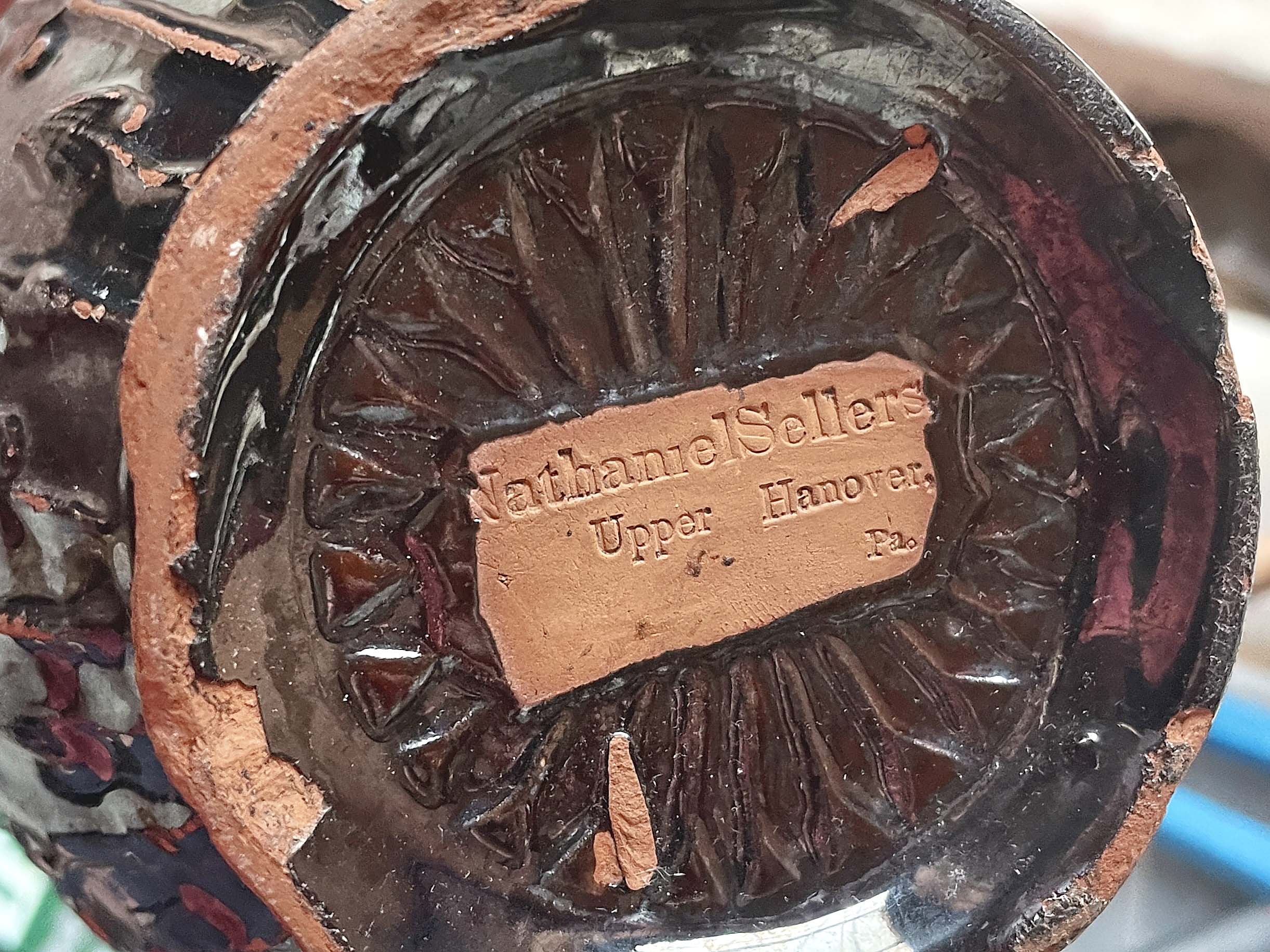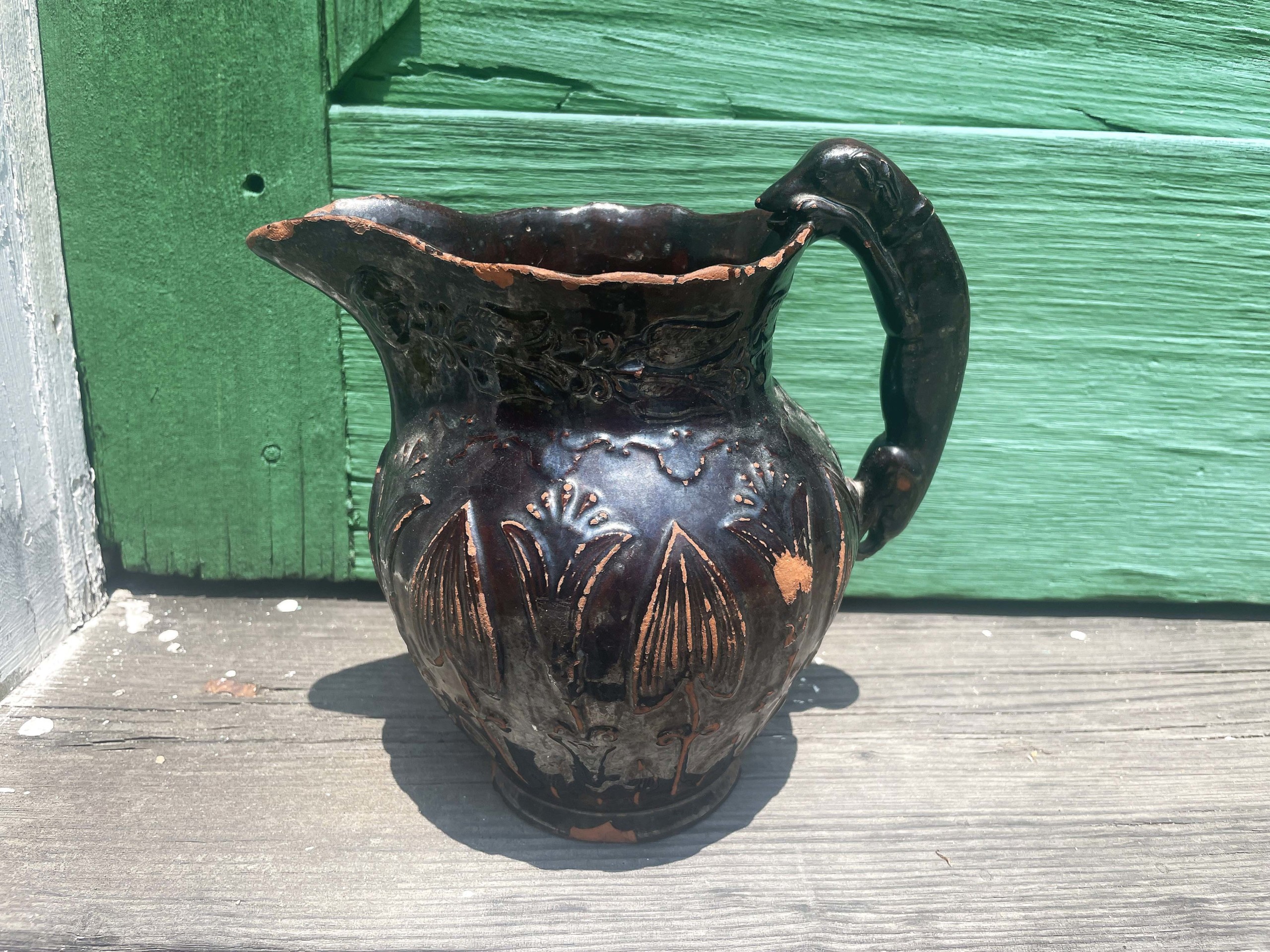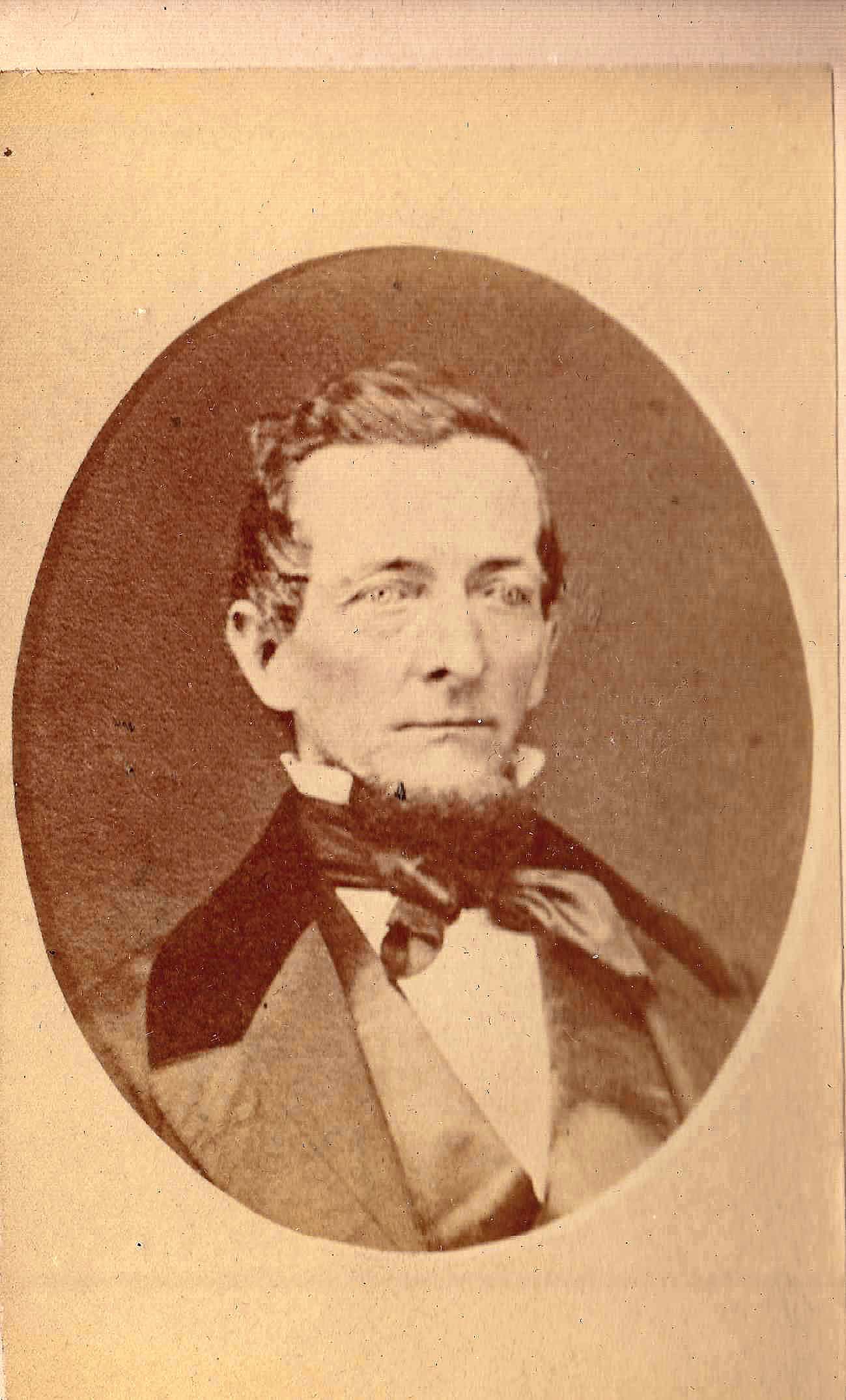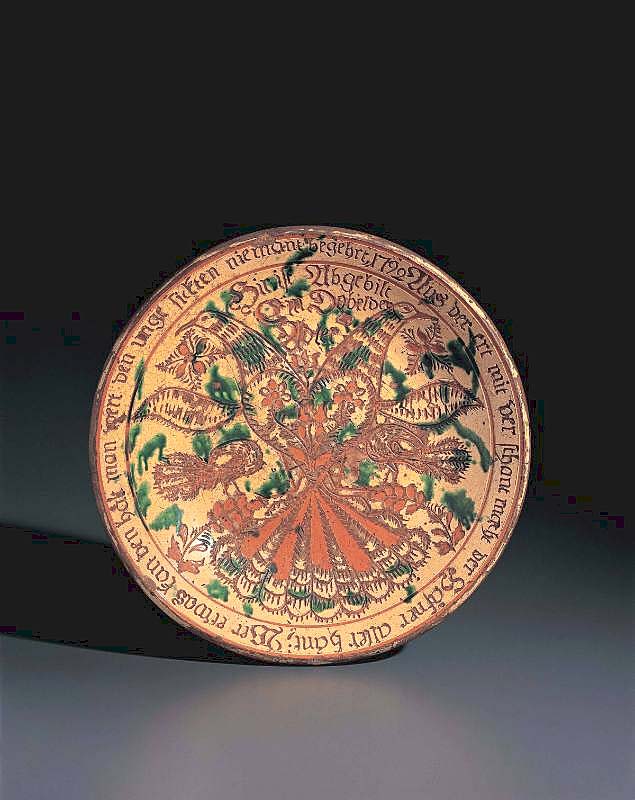
A view of the base of the hound handle pitcher, which is marked “Nathaniel Sellers / Upper Hanover / Pa.” Courtesy Garrison and Diana Stradling.
By Justin W. Thomas
Located about 50 miles to the north of Philadelphia, Upper Hanover (Montgomery County, Penn.) became part of Hanover Township before 1741, along with Douglass, Pottsgrove, New Hanover Township and the Borough of Pottstown. In the same year, Upper Hanover separated from Hanover Township; at the time, its boundaries included the three villages of Palm, Kleinville and Hillegassville, in addition to the settlements which now constitute the boroughs of Pennsburg, Red Hill and East Greenville.
The region’s rich soil attracted German farmers, who settled in the area. It also had a good source of clay for red earthenware production, which attracted potters and led to increased industrial activity in the 1700s.
There is no available documentation of Upper Hanover having utilitarian red earthenware production in the Nineteenth Century despite its ties to one of the state’s better-known potters of the Eighteenth Century, George Hubener (1757-1828). Hubener was known for his sgraffito decorated red earthenware adorned with floral designs, which sometimes utilized peacocks and inscriptions made with wares that he manufactured in Upper Hanover Township after 1780. The pottery he produced is considered to be some of the most accomplished red earthenware made anywhere in the United States in the Eighteenth or Nineteenth Century. Hubener’s work is displayed in and owned by a number of museums today, including the Philadelphia Museum of Art, the American Folk Art Museum in New York City and the Winterthur Museum in Delaware.

A Nineteenth Century molded red earthenware hound handle pitcher stamped “Nathaniel Sellers / Upper Hanover / Pa.” on the base. Courtesy Garrison and Diana Stradling.
According to the Landis Valley Village & Farm Museum’s award-winning two-part exhibit, titled, “Thrown, Fired and Glazed: The Redware Tradition From Pennsylvania and Beyond,” “George Hubener may have apprenticed with John George Sissholtz or Moravian potter John Ludwig Huebner who ran the Bethlehem Pottery (in Pennsylvania). Most of his surviving pieces are inscribed with dates from 1786 to 1793. The exact site of his pottery is unknown, but it is believed that he moved several times. The Upper Hanover Township tax records list Hubener as a potter taxed for one horse and two cows from 1787 to 1788. In 1790, he purchased 57¾ acres in Limerick Township, Montgomery County. He moved to Vincent Township, Chester County in 1792, selling his Limerick Township property. He was still working as a potter at that time. In 1797, Hubener bought a 186-acre farm and mill in Chester County, at which time he was working as a miller instead of a potter.”
Interestingly, there is a Nineteenth Century molded hound-handle red earthenware pitcher, part of the collection of ceramic specialists Garrison and Diana Stradling of New York City, which is impressed on the base, “Nathaniel Sellers Upper Hanover, Pa.” The pitcher is decorated with what appears to be ancient motifs along with tulips and other decorative elements. There was no documented potter by this name working in Upper Hanover during this period, although this name was known in the community in the 1800s.
Nineteenth Century molded earthenware hound handle pitchers were a popular style of production during the 1840s and 1850s, made by a number of pottery manufacturers in America, including potters located in Ohio, Vermont, New Jersey and Baltimore.

A photographic portrait of Nathaniel Sellers (1808-1867).
The maker of this pitcher, Nathaniel Sellers (1808-1867), was born on July 27, 1808, to Tobias (1781-1862) and Elizabeth (Faber) Sellers (1782-1852). While listed as a doctor in the 1830 United States Federal Census, Tobias’ occupation had changed to druggist in the 1850 Census. The couple had seven children, six boys and one daughter; Nathaniel was the first-born. He was appointed as the postmaster of Upper Hanover on April 20, 1835, quite possibly the first of the small town.
Sellers was listed in the 1850 Federal Census with a misspelled last name of “Seller”; there was also an error in his age, where he was listed as being 38 years old instead of 42. Like many in the Nineteenth Century American Northeast, Sellers’ occupation was listed in the census as a farmer, many of whom supplemented their yearly income working part-time as a potter. Census records indicate that some of these potters (especially in western New York) often cited their full-time profession as being a farmer. This notion of multiple job titles was certainly no different in Pennsylvania during this period.
In addition to being a farmer, Nathaniel Sellers was possibly a potter in Upper Hanover, perhaps in the 1840s and 1850s, although this aspect of his profession is not well-known today. This pitcher might be the only identifiable object associated with Sellers’ production, seeing that it is not known how he would have learned the potter’s trade otherwise.

An Eighteenth Century sgraffito decorated red earthenware plate made by George Hubener in Upper Hanover Township, Penn.; the plate is dated 1792. Courtesy American Folk Art Museum.
However, in the 1860 Federal Census, Sellers’ age and the spelling of his last name were correct, and he was listed as a full-time potter living with his family in the Southeast Ward of Reading, Berks County, Penn., with an estate worth $200. He may have also been employed as the postmaster in Reading in 1860. But, like production in Upper Hanover, any pottery that Sellers may have produced in Reading is also largely unknown today. He may have intermittently operated his own business, although there was a lot of red earthenware production in Berks County in the 1800s, so he may have also been employed as a potter at a business owned by another tradesman.
Nevertheless, Sellers is another example of an American utilitarian potter whose production is largely unknown today. He may have made thousands of pieces of pottery in 1800s, which are now generically identified as “production in Pennsylvania” or another location.







